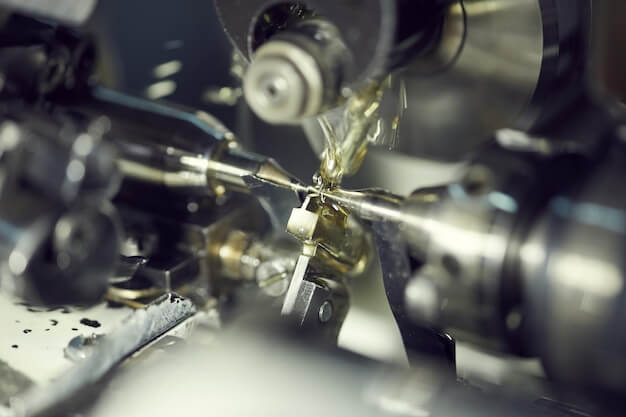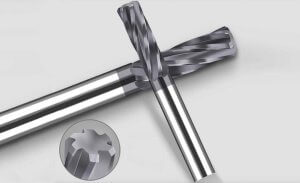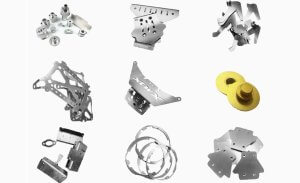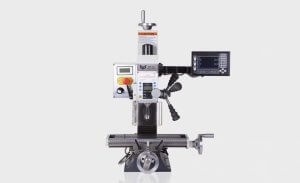Introduction and Overview of CNC Tooling Material Selection
The selection of materials, specifically between graphite and steel, plays a crucial role in the longevity and durability of Computer Numerical Control (CNC) tooling. CNC tooling encompasses various machinery operations guided by computer systems for multiple industrial tasks such as cutting, grinding and shaping. Selecting the appropriate material is significantly important as it directly impacts tool lifespan, wear resistance and overall job performance.
- Graphite tools:, Generally known for their lightweight nature and exceptional thermal conductivity, are easily machineable and less prone to mechanical wear over time.
- Steel Tools: On the other hand, deliver high strength and hardness that can withstand vigorous machining processes while maintaining precision. However, they may erode faster under certain conditions, affecting their lifespan.’
In summary, each material comes with its specific technical characteristics making them fit different applications. The choice often depends on factors such as the nature of the machining task, operational budgets, long-term maintainability among others .
Understanding Graphite and Steel: Basic Properties
Firstly, let’s discuss steel. An alloy primarily composed of iron and carbon, steel is renowned for its unparalleled strength, making it the material of choice in many manufacturing processes. The fundamental properties of steel relevant to CNC tooling include high tensile strength, durability, and resistance to wear. High-speed steel, a specific variant used frequently in CNC machining, incorporates elements like tungsten, vanadium, molybdenum, or cobalt to improve heat resistance and prolong tool life.
Moving over to graphite, this mineral—primarily composed of carbon—is distinct because of its unique layered structure. These layers slide easily over each other, providing impressive lubricity, which can reduce friction during machining operations. Additionally, graphite possesses high thermal conductivity and excellent electrical conductivity, allowing it to withstand intense operating conditions without significant degradation, thus extending tool longevity. Its intrinsic softness and brittleness compared to metals might be perceived as downsides; however, these features also mean less wear on cutting tools and more lenient spindle requirements.
- Steel:
- High tensile strength and durability.
- Resistant to shearing forces and wear.
- A variety of superior variants like high-speed steel offer improved endurance.
- Graphite:
- Lubricating properties due to its layered structure.
- High thermal and electrical conductivity.
- More forgiving toward cutting tools and spindles due to lower hardness.
Comparison between Graphite and Steel in CNC Tooling
When comparing graphite and steel in CNC tooling, it’s important to consider factors such as:
- Wear resistance
- Thermal conductivity
- Machining precision
Longevity of Graphite in CNC Tooling
In the realm of Computer Numerical Control (CNC) tooling, graphite is highly lauded for its durability and long-lasting performance. This mainly stems from two key properties – high thermal conductivity and low coefficient of thermal expansion. These attributes make graphite capable of handling extreme temperatures without deforming or breaking down over time. Hence, it facilitates longer machining runs with reduced downtimes for maintenance. Moreover, due to its dense composition, wear and tear are considerably minimized as compared to other materials.
To illustrate this trait more vividly, consider a large-scale mould manufacturing project that ran continuously for 72 hours. The chosen graphite-based tool was subjected to persistent heat and friction during this period. Post-project evaluation showed the tool’s structural integrity was maintained, with only minimal signs of degradation despite such strenuous conditions. This showcases the remarkable longevity and resilience of graphite in CNC tooling applications.
Longevity of Steel in CNC Tooling
In the world of CNC tooling, steel’s longevity is often unmatched. This material’s durability stems from its inherent qualities, such as its resistance to wear and its ability to maintain shape under high stress conditions over an extended period. Being a hard metal, it can withstand numerous machining processes without substantial degradation or need for frequent replacement.
To illustrate this practicality, consider a scenario involving a long-term milling operation utilizing a steel-based tool. Over countless hours of continuous use, the tool stays consistent with minimal wear; consequently, enhancing machine uptime and productivity. The strength of steel offers sustained accuracy in operations, preventing costly errors that could arise due to unpredicted tool damage or deformation resulted by softer materials.
- Durability: Steel shows immense resistance to wear, critical for prolonged manufacturing operations.
- High Stress Performance: Steel maintains its shape even under intense stress, making it suitable for heavy-duty machining tasks.
- Economic Advantage: Its lasting nature reduces costs associated with constant tool replacements and downtime caused by damaged tools.
Advantages and Disadvantages of Using Graphite vs Steel
The choice between graphite and steel in CNC tooling greatly impacts the longevity as well as performance of the tools. Both materials have unique benefits and potential drawbacks to consider.
Graphite Benefits:
- One of the major advantages of choosing graphite for CNC tooling is its high thermal stability; it can withstand higher temperatures without deforming or melting.
- It also possesses a lower friction coefficient, which results in less wear and tear on the tools, extending their lifespan significantly.
- Besides, due to its lightness compared to steel, graphite can increase the speed and efficiency of machining processes.
Potential Graphite Drawbacks:
- On the downside, graphite can be more brittle than steel, making it susceptible to breakage especially under excessive impact or shock.
- Another drawback includes some health hazards related to dust generated from the machining process.
Steel Advantages:
- In contrast, steel offers outstanding durability and toughness, preventing breakage even when used in heavy-duty machining tasks.
- Also, steel’s capability to maintain sharpness over time makes it an ideal material for precision works that require long-term dimensional stability.
Possible Steel Disadvantages:
- However, using steel can result in slower machining speed due to its heaviness.
- Additionally, steel has a higher risk of rust, especially if not properly maintained or exposed to a humid environment, which may lead to shorter tool life.
Other Articles You Might Enjoy
- The Role of Bead Blasting in CNC Machining (bead blasting Steward)
Bead blasting is a commonplace aspect of numerous manufacturing procedures, including Computer Numerical Control (CNC) machining. Whether it's to enhance the external aesthetics or improve internal functionalities, bead blasting plays…
- Innovative CNC Machining for Advanced Spacecraft Components
Introduction: CNC Machining and its role in Spacecraft Components Computer Numerical Control (CNC) machining has, over the years, proven to be one of the most integral pillars within manufacturing industries.…
- Ceramic Tooling in CNC Machining: Breaking the Myths About Durability and Performance?
CNC Machining and Ceramic Tooling: Busting the Myths Computer Numerical Control (CNC) machining is an advanced method of manufacturing where pre-programmed software controls the movement of factory machinery, giving intricate…








